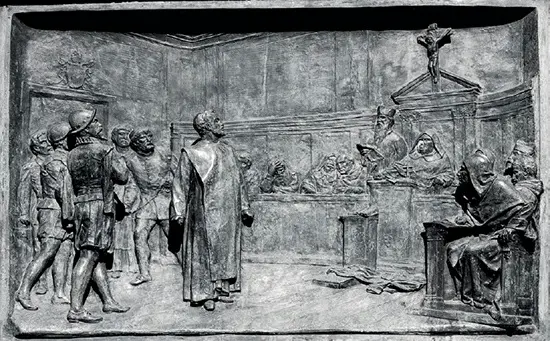In the sixteenth century, Giordano Bruno emerged as a bold proponent of the heliocentric model of the solar system, initially posited by Nicolaus Copernicus. Bruno’s ideas transcended Copernicus’s theory, envisioning an infinite universe filled with innumerable stars and planets, including many like our Earth. His beliefs starkly contrasted with the prevailing geocentric view endorsed by the Roman Catholic Church at the time, and his challenges to established religious doctrines led to his persecution by the Inquisition.
Bruno’s 1584 work, “De l’Infinito, Universo e Mondi” (On the Infinite Universe and Worlds), was a groundbreaking treatise that boldly proposed a universe where Earth was not unique, but one among countless worlds. His audacious stance on an infinite cosmos and the plurality of worlds was considered heretical, especially combined with his contentious denunciation of central Christian theological principles.
Ultimately, Bruno’s unyielding commitment to his beliefs and his contentious approach to challenging authority and conventional wisdom led to his tragic execution in 1600. His life and death serve as a poignant reminder of the historical tensions between scientific inquiry, religious doctrine, and authoritarian power. Bruno’s visionary ideas, once viewed as heretical, have gained recognition and validation in modern astronomy, cementing his legacy as a pioneering thinker in the exploration of our universe.

